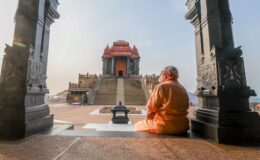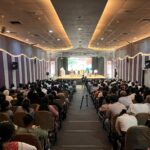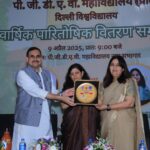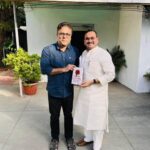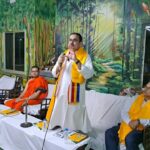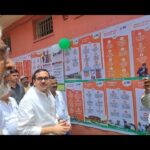VISVA BHARATI NEEDS A HEALING TOUCH
- By : Anirban Ganguly
- Category : Articles
It’s a cause for concern when Tagore’s institution, once a window for global minds to read India’s timeless civilisational message, loiters from its founding ideals
In the last week of March 1936, an ailing Rabindranath Tagore, having toured the “big towns” of North India with his dance troupe performing the celebrated nritya-natya (dance drama) Chitrangada, reached Delhi for a series of staging in the capital city. Tagore’s disciple and biographer Krishna Kripalani recounts, that Mahatma Gandhi, who happened to be in Delhi, was much perturbed that the aged poet in failing health should be obliged, for want of funds for his university, to undertake such arduous tours and immediately sent him a letter enclosing a bank draft for Rs 60,000 as an offering from “your humble countrymen.”
Expressing concern for the poet’s well-being, the Mahatma gently admonishing him asked him to “relieve the public mind by announcing cancellation of the rest of the programme.” “Deeply touched and grateful”, Tagore retreated to his Ashram, reassured by the Mahatma’s healing intervention.
Tagore’s journey of envisioning and creating Visva-Bharati was a long, arduous, winding and often friendless-trek in trying to fulfill one of India’s most vibrant civilisational message of perceiving an essential global unity amidst a pulsating variety of expressions.
It is thus a cause for deep national concern when things do not seem to be in balance at this hallowed institution that had once been a subject of India’s chief cultural-philosophical voice before the world and a window for global minds to read and assimilate India’s timeless civilisational message. Recent developments at the University compel one to ask as to how far astray such an institution shall loiter from its profound founding ideal.
The Poet was always deeply concerned over preserving the founding vision and purity of ideal of his beloved institution. He had bequeathed the task of protecting its legacy to the Mahatma who had taken it up with the reverence of a spiritual mission. In December, 1945, the Mahatma on a visit to Santiniketan, reinforced among the inmates, then bereaved of the physical presence of the Poet, the necessity of sustaining and nurturing the Poet’s work.
Likening “Gurudev to a parent bird with outspread wings, brooding over its nest”, Gandhi reminded his audience that “the true monuments to the great are not statues of marble or bronze or gold. The best monument is to adorn and to enlarge their legacy.” With Gurudev now gone it was now for the “workers and inmates of Santiniketan” and all those who were “imbued with Gurudev’s spirit — collectively to represent his ideals.”
The next evening, heads of various departments of the University — all stalwarts in their own right such as Nandalal Bose, Rathindranath Tagore, Kshitimohan Sen, Krishna Kripalani — met Gandhi “in an informal conference to place their difficulties before him and to seek his guidance.” Gandhi asked them not to hesitate to “tell him if the institution had fallen from the ideals of which Tagore had put before them.”
The difficulties and issues facing the institution were discussed thread-bare with the Mahatma proffering advice on all aspects raised, some of these were as basic as pertaining to admissions, distribution of administrative duties and finances. The Mahatma’s concluding advice was as touching as it was demanding, he suggested to all those gathered that they “overcome” difficulties by tapascharya! “It was an almost untranslatable word” and “the nearest approach to its true meaning” was “perhaps single-minded devotion.”
To Krishna Kripalani’s point “that they did not know what they were aiming at or stood for, [and] what the sum total of the energies” of Visva-Bharati signified, the Mahatma answered that the ideal before the institution was “not to represent Bengal or even India”, “you have to represent the whole world. Gurudev’s claim was not smaller than that. He stood for humanity as a whole…”
On independence, Gandhi’s political-heirs were satisfied by merely granting the status of an official university to Gurudev’s great experiment, gradually allowing its spirit to wallow.
Visva-Bharati urgently needs its current Acharya — the Prime Minister’s — reforming attention and healing touch.



